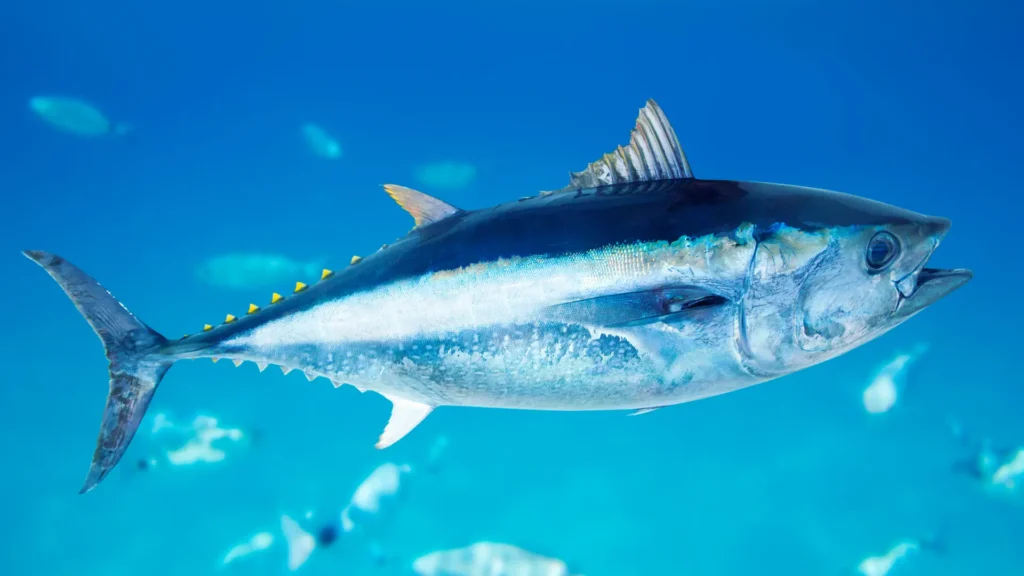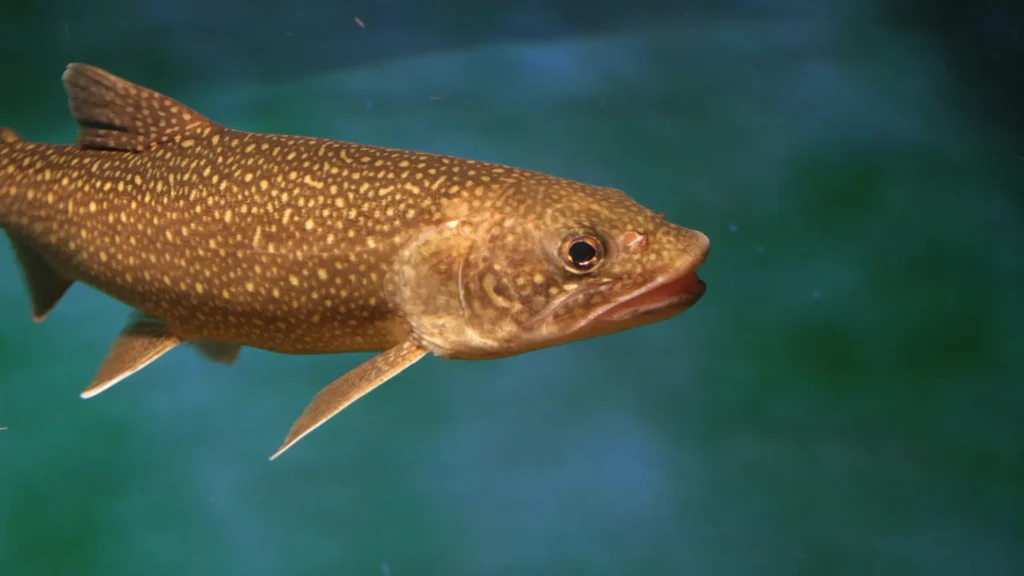To achieve success in tournament crappie fishing, it is crucial to actively engage in pre-fishing and thoroughly research the waters in which you plan to fish. Following this principle, Scott Bunch and Neal Alvis have honed their winning strategies in crappie fishing. They demonstrated consistent excellence across various bodies of water throughout the year, ultimately clinching victory in the 2020 Crappie USA points race. Notably, their accomplishments extended to the 2020 CUSA Classic on Green River Lake, KY.
Earning the Angler Team of the Year (AOY) title isn’t reliant on a solitary victory but rather on the entire journey. It demands unwavering performance in diverse conditions, with consistency taking precedence over sheer quantity. In the CUSA points race, champions emerge based on their top five finishes throughout the season and the championship event. Ultimately, the number of tournaments engaged in becomes inconsequential; what truly matters is the excellence displayed in the best six events.
Bunch and Alvis attribute their consistency to an annual plan that involves strategic tournament selection and a clear end goal. This approach proves effective not only for tournament anglers but also for recreational anglers aiming to enhance their crappie-catching success.
Engaging in tournament fishing offers a spectrum of emotions—from fun and excitement to an adrenaline rush and potential disappointment. The success of a tournament hinges on your expectations from the event. Prioritizing learning with a goal of achieving a respectable finish is likely to result in satisfaction. Conversely, adopting a ‘first place or bust’ mentality may lead to frustration, defeat, and embarrassment.
For those looking to enhance their recreational fishing or test their skills in a nearby tournament, the following tips prove invaluable. The pivotal factor in winning crappie tournaments is the adept identification of fish, particularly the larger ones. This skill distinguishes proficient anglers from the rest. Consistently locating crappie and honing in on the substantial ones demands skill.
When preparing for a tournament, approach pre-fishing with wisdom. Employ a systematic strategy that involves test-fishing various areas of the lake to maximize your chances of success.
The Crappie Fishing Game
Develop a comprehensive game plan for tournament day, focusing on fishing your high-potential areas. Select spots guaranteeing a tournament limit of seven fish, focusing on areas likely to hold sizable fish.
Slow trolling, also called spider rigging, is the most effective method for year-round fishing in various lakes. Ronnie Capps and Steve Coleman validate its success with victories and substantial earnings in numerous tournaments. Their dissemination of tactics in books and articles has facilitated the learning of this technique by fellow fishermen.
The basic method entails positioning long poles at the boat’s front, with both anglers collaborating to share tasks like catching fish, operating the trolling motor, netting, and baiting. Slow trolling is executed against the wind to maximize boat control. In high winds, fishermen go with the wind but utilize a large logging chain to slow the boat and maintain a straight course. The key is to employ a slow, controlled method to present multiple baits effectively.
Engaging in fast trolling provides an enjoyable and effective means of catching fish. George Parker, a formidable contender in Florida, consistently excels in Bass Pro Shops Tournament Trail tournaments through this method. Employing fast trolling in various lakes nationwide, Parker successfully captures scattered and suspended crappie. Florida, especially, is an ideal setting for this method, as seen in the 2008 Crappie Masters classic on Harris Chain, where fast trolling small jigs secured victory.
Meanwhile, vertical jigging remains a thriving technique, especially at Missouri’s Truman and Mark Twain lakes. In locations with standing timber like these, a jigging pole often outperforms both slow and fast trolling. The allure lies in crappie’s affinity for wood, making trees an optimal location for them to dwell, feed, and survive. Typically, crappie fishing involves one-pole jigging, emphasizing precision, patience, and adept fish fighting as crucial factors.
Trolling crankbaits is a popular tactic in tournaments, capturing significant fish, especially in adverse wind conditions. Using crankbaits like the Bandit 300-series involves placing them 50 to 200 feet behind the boat with poles in holders. When a fish strikes, it surfaces, and the angler promptly reels it in. Despite its simplicity, this technique can prove highly effective when fish are responsive to crankbaits.
To optimize results, it is crucial to utilize the appropriate equipment. Though challenges may occur, diligently maintaining, preparing, and organizing your boat and gear can greatly reduce issues and ease frustration during your time on the water. This practice is straightforward—take care of your equipment, and it will reciprocate by taking care of you.
Active preparation is a crucial component of the puzzle when it comes to finding fish. Preparing for a crappie fishing trip involves studying maps, contacting fishing friends, checking lake websites, and getting current information from marinas. Some anglers even exchange GPS coordinates, enhancing their readiness and expediting the process of locating fish.
I’ve noticed that effective crappie fishing partnerships elevate each other’s skills. These adept duos possess an understanding of each other’s actions, timing, and techniques, functioning seamlessly as a team. Successful tournament teams often feature long-time partners and close friends, illustrated by the male/female duo of Don and Toni Collins from Florida.
Assimilate all the information into your mind and analyze it.
What insights are you gaining from each fished area and every caught fish? Observing anglers on the Bass Pro Shops Crappie Masters Tournament Trail reveals their diligence in paying attention to unfolding events and synthesizing the details. They diligently work to establish a pattern, identifying the prime spots, optimal presentation, and strategic areas.
“At the beginning of the year, we assess tournaments that match our fishing style,” Alvis clarified. “We favor targeting black crappie, which often associate with structures or docks, leading us to select bodies of water with these features.”
“Starting with the end in mind means that during our scouting, we are gearing up to make the most of the time we will spend on the water,” added Alvis.
Bunch and Alvis, predominantly single-pole anglers, excel at catching fish near structures, under docks, and along ledges. Whether vertical fishing, casting, or dock shooting, they integrate Garmin LiveScope as a vital element in their strategy. By keeping their end goals in sight, they efficiently eliminate unproductive structures and docks during the pre-fishing phase.
Revolutionizing the crappie fishing landscape, the introduction of Garmin LiveScope has had a significant impact. Tournament anglers now rely on this technology to pinpoint the larger fish essential for consistent success in competitions. Simultaneously, recreational anglers leverage it to enhance their ability to locate and catch more crappie for their dining tables.
“We equip our boat with two LiveScopes,” Alvis highlighted. “This setup allows us to cover a broader area when scouting for fish.”
Regarding rigging, their preferred configuration involves a single jig head paired with Crappie Magnet or Slab Magnet bodies, utilized on B’n’M poles. While colors and sizes may vary based on conditions, they commonly tip their setups with Slab Bites.
Both weekend warriors and tournament participants grapple with the challenges posed by crowded waters and overfished structures. This scenario was evident during the Classic at Kentucky’s Green River Lake.
“Having over 120 boats on a 9,000-acre lake for a week of pre-fishing creates a demanding situation,” Bunch remarked. “Many structures, especially man-made ones, receive considerable pressure.”
Faced with these conditions, Bunch and Alvis actively seek out new natural structures and identify areas that typically go unnoticed by most anglers. This is precisely where LiveScope becomes an invaluable asset in their fishing strategy.
Preparing for tournament day doesn’t happen by chance.
As a consistent follower of this monthly column, you know my passion for crappie fishing tournaments.
I played a significant role in establishing the Magnolia Crappie Club, being one of the two remaining active charter members. Over the past 22 seasons, I’ve actively participated in almost every tournament hosted by MCC.
Now, let’s delve into the realm of crappie fishing tournaments. I’ll guide you through the intricacies of tournament preparation, pre-crappie fishing techniques, strategies for the actual tournament day, and even the rules and regulations governing tailgating.
Active preparation for a tournament holds equal importance for me compared to the actual crappie fishing during the event. It’s worth noting that some teams, despite minimal preparation and lacking knowledge about the lake or current conditions, have emerged victorious without any prior familiarity with the tournament venue.
The outcomes for a team are influenced by a combination of skill, knowledge, and luck.
Among the initial considerations leading up to tournament day, the weather forecast takes precedence. Specifically, I focus on factors like wind speed, wind direction, the presence of weather fronts, recent surface water temperatures, and, if applicable, the river stages and flow rates feeding into the lake.
Before tournament day, I rely on a couple of online resources to obtain up-to-the-minute information and forecasts. The Navionics system, not only serving as my lake mapping software on the tournament boat, provides online access to current and projected wind directions and speeds for the lakes in my plan.
The Navionics wind forecast, known for its accuracy, is regularly updated. I make it a practice to check it three days before heading to the tournament and on the morning of the event itself.
For a more comprehensive weather outlook, including wind forecasts, I turn to the NOAA website’s hour-by-hour forecast. This platform offers detailed information ranging from barometric conditions and sunlight percentages to temperatures and wind speeds. It proves particularly valuable for deciding on appropriate attire and determining whether to bring rain gear.
Prefishing techniques
Prefishing involves various techniques, some more earnest than others.
Right from the start, it’s detrimental to catch all your tournament fish during prefishing days, a mistake I’ve admittedly made more often than not.
When scouting the lake, the goal is to fish multiple locations and employ various strategies. Essentially, prefishing is synonymous with “practice” fishing, and as with any sport, consistent practice contributes to improved performance when it truly matters.
Apart from time on the lake with lures, insights and advice from fellow anglers, in both tournaments and recreation, are valuable. Yet, it’s crucial to distinguish truths from exaggerations during pre-tournament storytelling around the grill or tailgate.
Amidst the tales you may encounter while prefishing, utilize your detective skills. Observe your surroundings—what are other fishermen doing? Where are they fishing? Are they successfully landing good fish? Take note of the depths and types of lures yielding positive results.
Tournament-day strategies
Game day, my friend, is T-Day. Gear up with determination, rise early, and hit the water with a sense of urgency, carefully attending to every detail.
Ensure that everything in your boat is in tournament-working condition; now is not the time for last-minute reel restringing or loading crankbaits. All preparations should have been completed yesterday because on T-Day, every minute holds significance.
Final Tip:
Gone are the days of “blast-offs” for safety reasons. Instead, MCC provides tournament competitors with designated “start fishing” and “stop fishing” times, eliminating the risky chaos of boats racing in various directions from a single spot.
Having a game plan is crucial, often derived from prefishing experiences. While starting with Plan A, it’s prudent to have a Plan B on standby in case circumstances change during tournament action.
Adaptability is crucial; be ready to alter your plan if it proves ineffective on the tournament morning. For instance, slow-trolling minnows involves setting six poles at various depths with different-colored hooks, enabling swift adjustments based on the day’s conditions.
Effectively handling various factors—depth, lure color, location, presentation, trolling speed, wind direction, and the use of attractants and minnow size—can decide success or just another day on the lake. The strategy that succeeds on T-Day is rarely stumbled upon by accident or sheer luck.
As an enthusiast of tournament fishing, I relish the competitive nature of the sport, the camaraderie around the grill on Friday night, and the opportunity to explore innovative techniques that might outshine conventional methods on T-Day.


